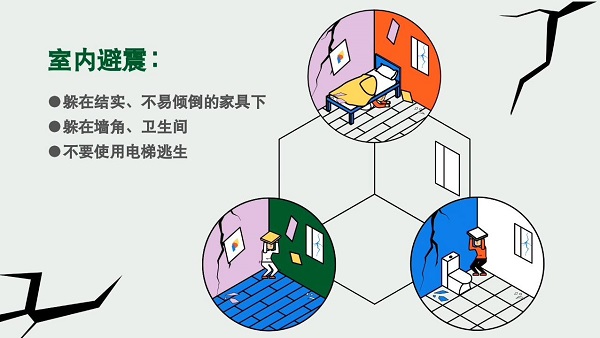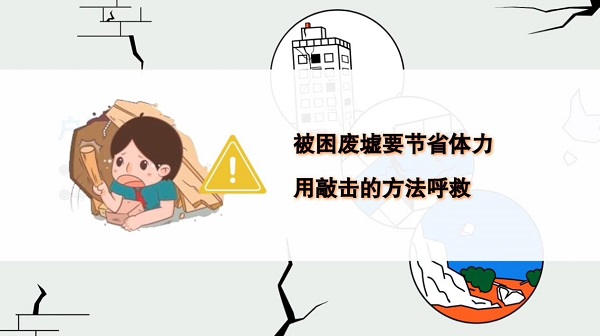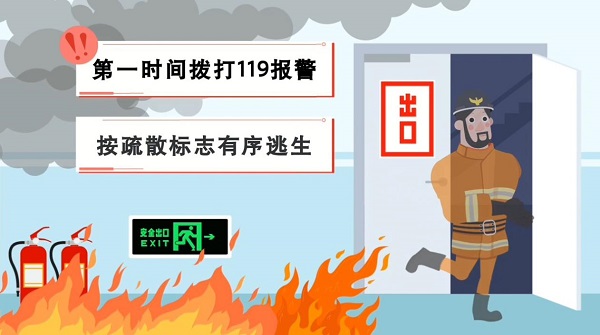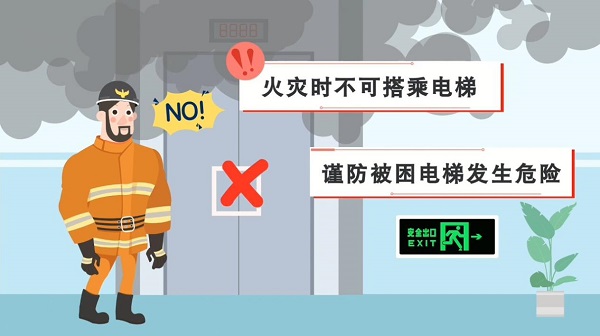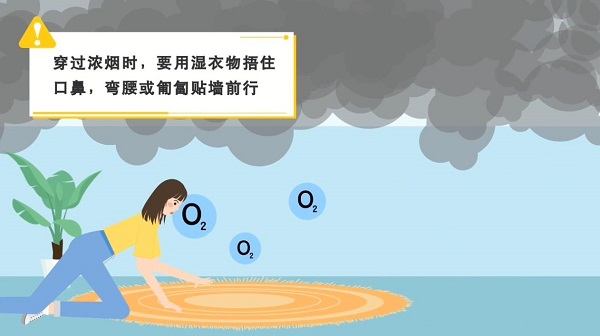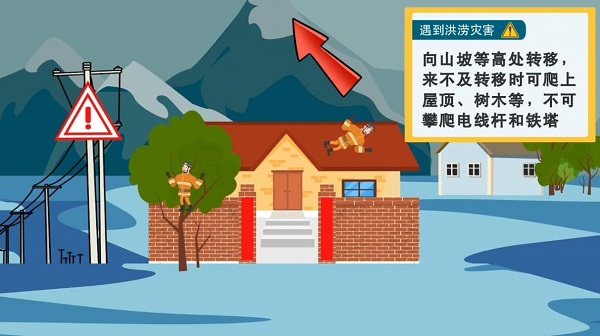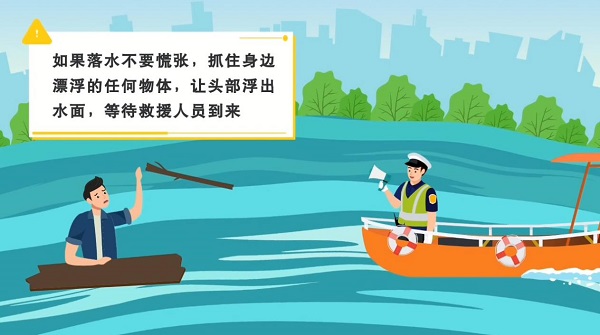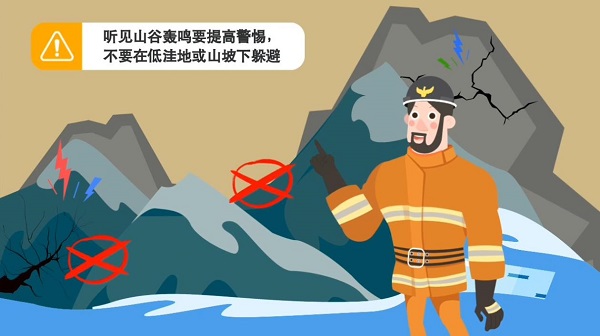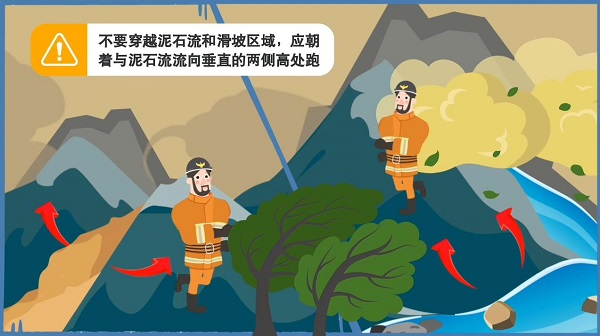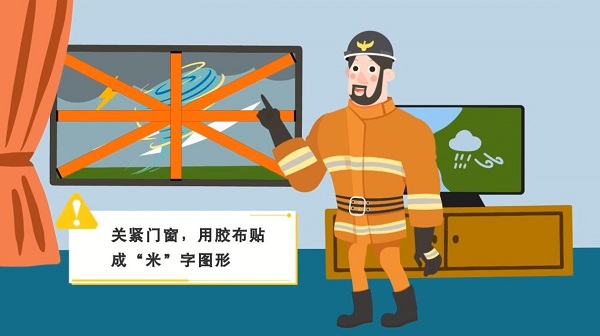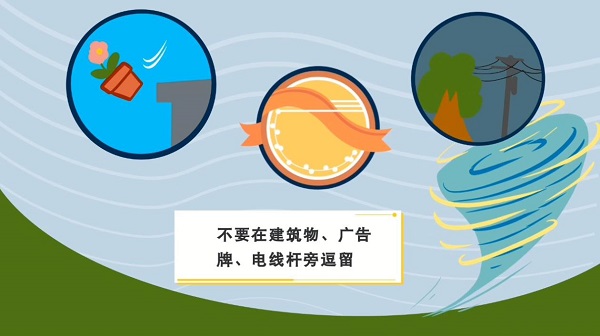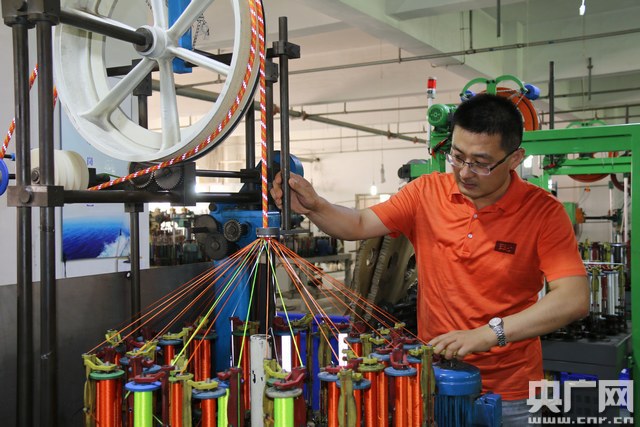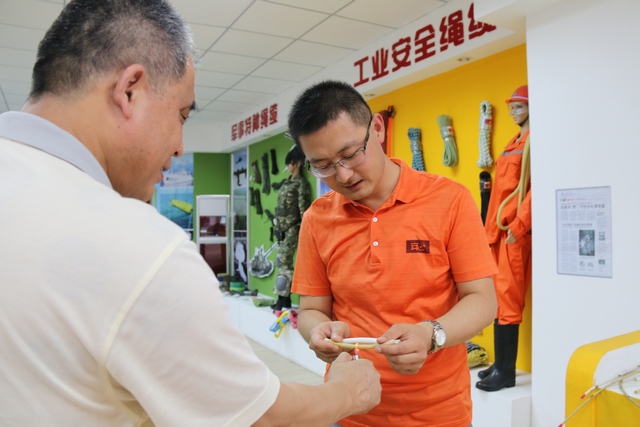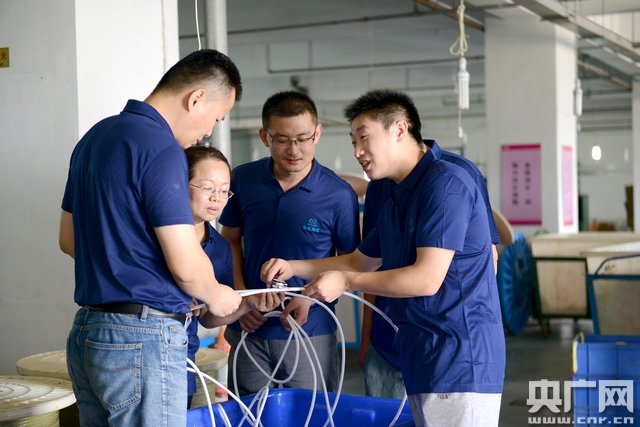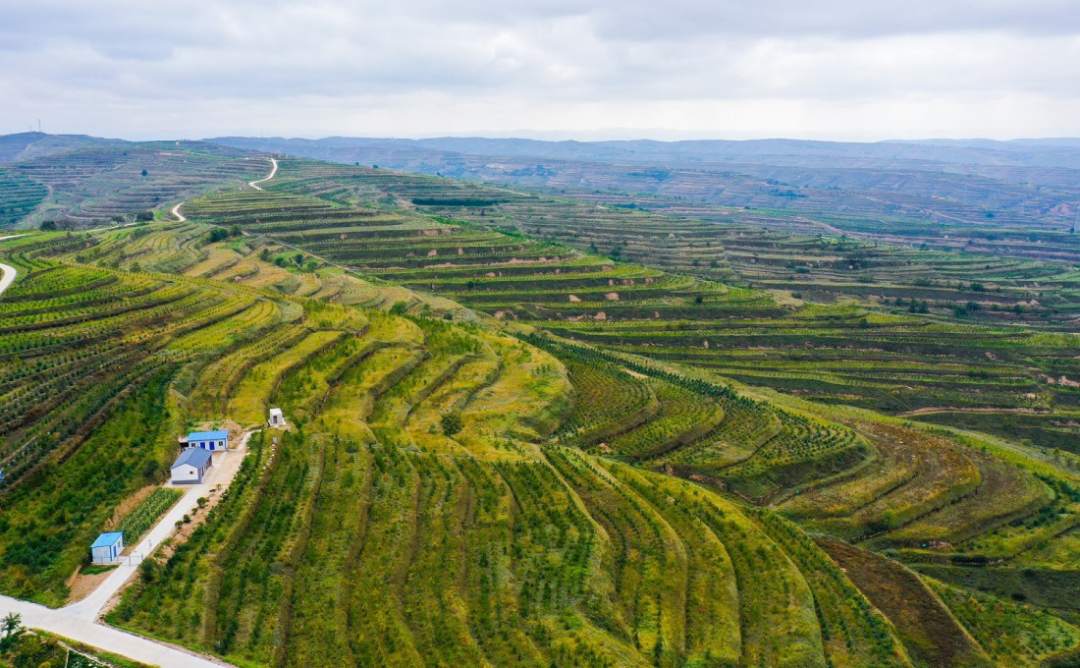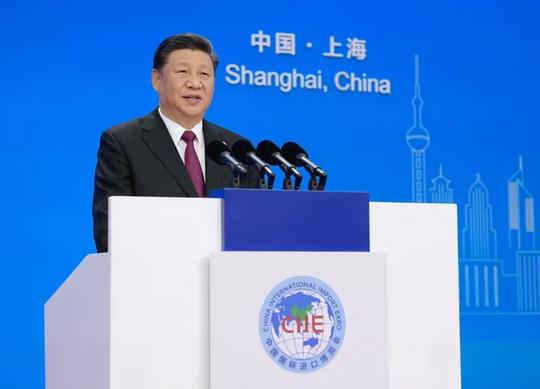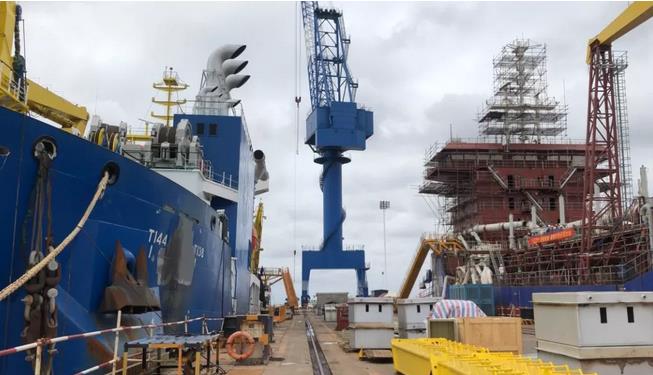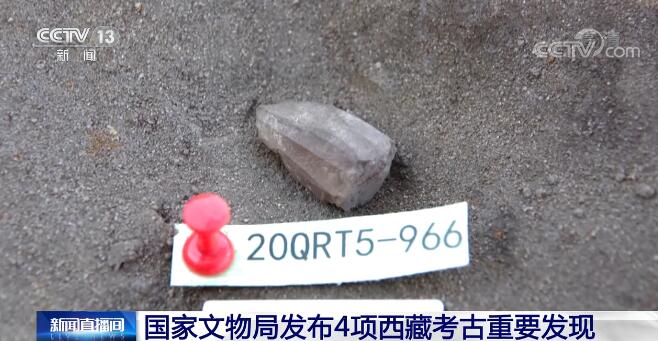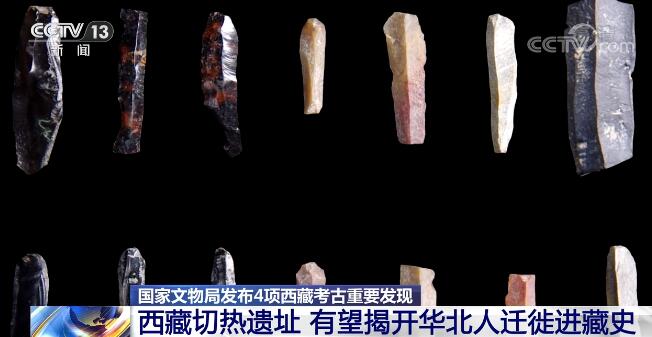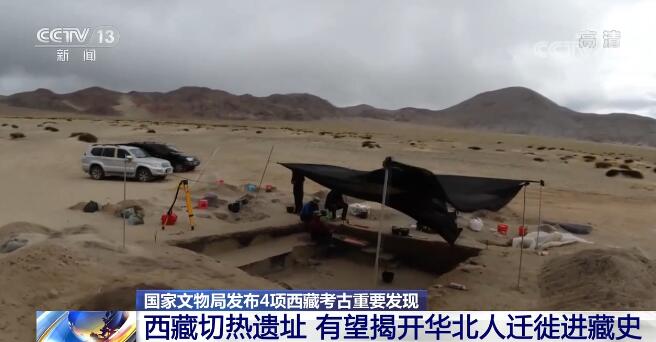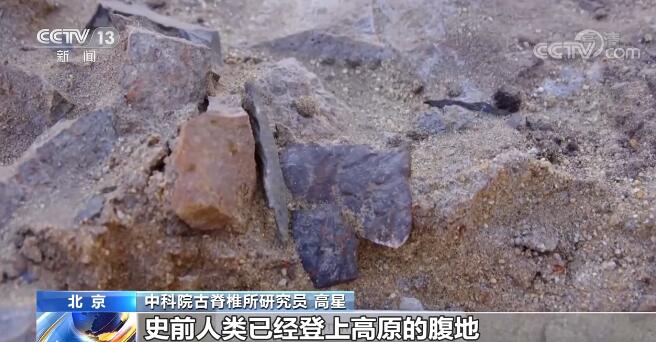Empowering Digital Intelligence: China’s manufacturing industry seizes a new highland for high-quality development.
Xinhua News Agency, Beijing, March 18th Title: Digital Intelligence Empowerment: China’s manufacturing industry seizes a new highland for high-quality development
Xinhua News Agency reporters Ma Xiaocheng and Xiao Yichen
On the assembly line, the mechanical arm swings and flips flexibly; On the screen, the numbers that record product information keep jumping … … In Shunde microwave oven factory, which was awarded the title of "Lighthouse Factory" in the world, intelligent quality management has been realized.
According to the latest list of "lighthouse factories" published by the World Economic Forum, among the 132 "lighthouse factories" in the world, China leads with 50 seats.
The "Lighthouse Factory" project aims to find a model of digital transformation of manufacturing industry, and all the selected factories are exemplary innovative demonstrators of "digital manufacturing" and "globalization 4.0". More and more China factories have been selected as "lighthouse factories", which is the epitome of China’s manufacturing industry seizing the new highland of high-quality development.
According to Fang Hongbo, chairman of Midea Group, building five world "lighthouse factories" within three years is the natural result of digital transformation. Midea Group will also export the "beautiful lighthouse experience" through Meiyun Zhishu, forming a lighthouse effect and helping China’s manufacturing industry to transform and upgrade digitally.
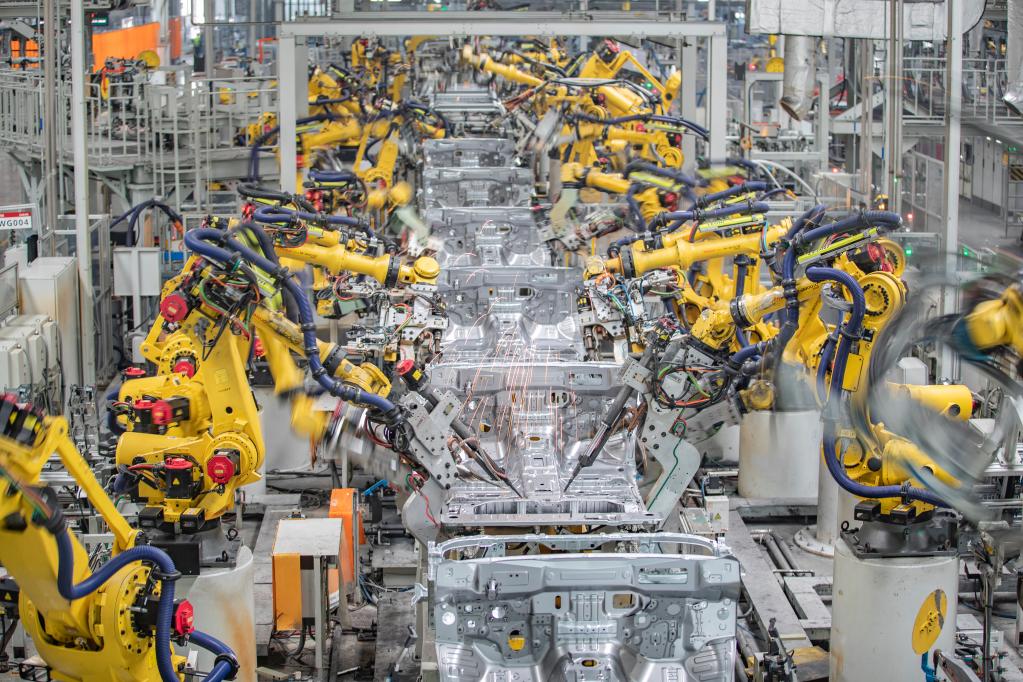
In the welding workshop of Chongqing Yongchuan production base of Great Wall Motor, intelligent welding robot is welding. Xinhua News Agency reporter Huang Weishe
China’s digital economy has been ranked second in the world for many years. This year’s government work report proposes to speed up the construction of a modern industrial system, speed up the digital transformation of traditional industries and small and medium-sized enterprises, and strive to improve the level of high-end, intelligent and green.
"Digital empowerment manufacturing transformation" has become a hot topic in the National People’s Congress this year. Member Lin Xiaofa, secretary of the Party Committee and Chairman of Jiumu Group, proposed to empower digital intelligence to build a strong country and promote the high-quality development of brand power.
In Jiumu 5G smart toilet factory located in Nan ‘an, Fujian, a futuristic digital production scene has become a reality: AGV cars connected to the 5G private network are fully loaded with production materials to shuttle flexibly; MES billboards all over the place show the operation of the workshop in real time; Digital precision injection kanban realizes the visualization of all equipment.
With the empowerment of digital intelligence, the factory can produce 4.5 million sets of smart toilets every year, with a quality pass rate of 99%, cost reduction of 30% and energy saving of 30%.
Lin Xiaofa suggested that it is necessary to build an intelligent and innovative industrial cluster of aircraft carriers, cultivate and develop future industries, build a policy system to lead future industrial development, and at the same time vigorously cultivate the industry benchmark "lighthouse factory" to accelerate the transformation and upgrading of digital intelligence in manufacturing.
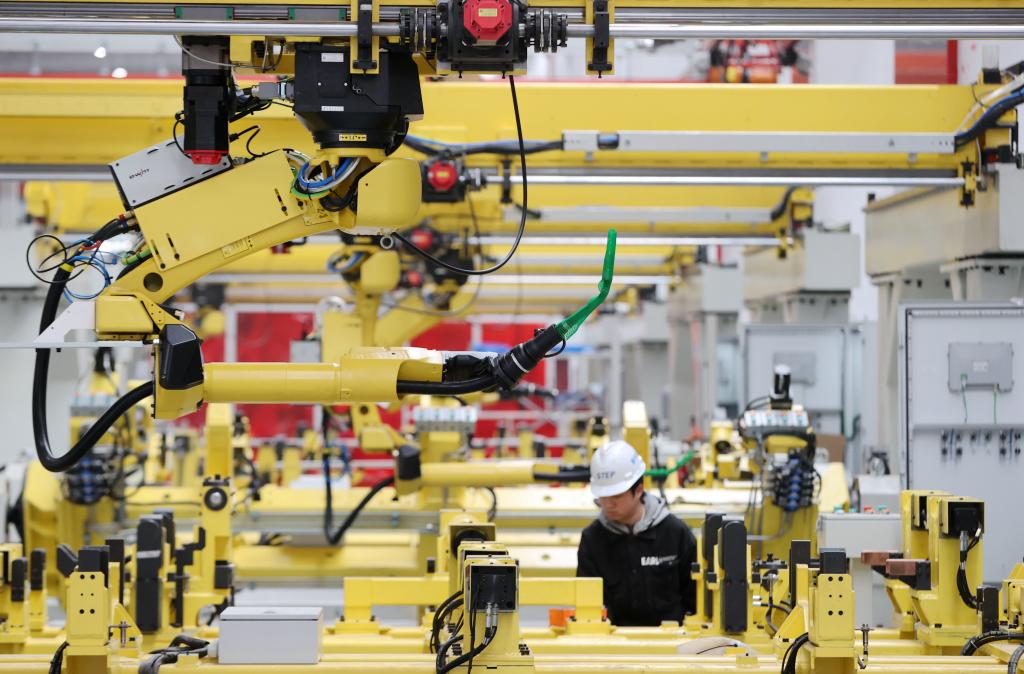
In the "Future Factory" workshop of an aerial work machinery manufacturer in Leidian Town, Deqing County, Zhejiang Province, workers are debugging the intelligent production line. Xinhua news agency
According to the Overall Layout Plan of Digital China Construction, by 2035, the level of digital development will be in the forefront of the world, and great achievements will be made in the construction of digital China.
The Central Committee of the Communist Party of China and the State Council recently issued the "Party and State Institutional Reform Plan" and set up the National Data Bureau, which is responsible for coordinating and promoting the construction of data infrastructure, coordinating the integration, sharing, development and utilization of data resources, and coordinating the promotion of digital China and digital economy.
The top-level design continued to improve, and policy practice actively followed up. All parts of China have made moves to promote the digital transformation of manufacturing industry, and "innovation" has driven "innovation".
Anhui marked the action path of "Digital Anhui" in the next three years, and proposed that by 2025, the digital transformation of manufacturing enterprises above designated size and the digital application of manufacturing enterprises below designated size in key industries in the province will be fully covered; Jiangsu has clearly accelerated the digital transformation of manufacturing industry, of which Suzhou will arrange special funds of 2.4 billion yuan this year for tackling key industrial technologies and intelligent transformation; Shanghai plans to increase the density of industrial robots by 100 per 10,000 people by 2025.
"Building a typical demonstration project of provincial digital transformation", "Building a regional model of digital transformation" and "The digital transformation of manufacturing industry in the whole province has entered the forefront of the country" … … Looking at the relevant policy documents issued recently in various places, "digitalization" is a high-frequency word. On the key track of deep integration of digital economy and real economy, various places are racing. Zhejiang, Chongqing, Hainan and other places have proposed to strive to increase the added value of core industries of digital economy by 10% in 2023.
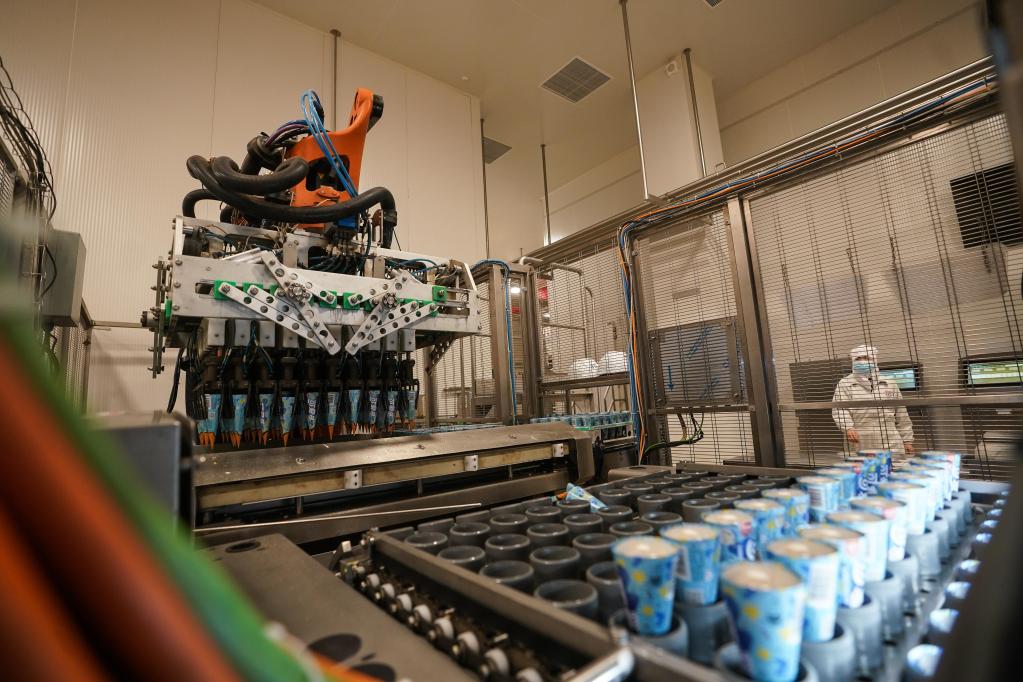
Unilever and Luxue production base located in Taicang, Suzhou, Jiangsu, was awarded the global "Lighthouse Factory" in September 2021 and became the benchmark of local "intelligent manufacturing". In the factory, robots are transferring products to quick-freezing tunnels. Xinhua News Agency reporter Ji Chunpeng photo
Industrial Internet is an important support to promote the upgrading of China manufacturing to China Zhizao. In the past five years, China’s industrial Internet has been fully integrated into 45 categories of national economy, and its industrial scale has passed the trillion-dollar mark, and its functions of empowerment, assignment and intelligence have become increasingly prominent.
Zhang Xiaotong, chief engineer of China Industrial Internet Research Institute, said that from a deeper level, the same-frequency resonance between the industrial Internet and a new generation of information technology is expanding the broad prospects of integration and innovation, enabling more industries to glow with high-quality development and vigorous vitality.
In Guangdong, Shugen Internet Co., Ltd., which provides industrial Internet services, has served more than 200 local manufacturing enterprises such as Guangqi Honda and Jianlibao, and empowered 36 "specialized and innovative" enterprises, among which Guangzhou digital project construction has tripled compared with 2018.
According to Daniel He, co-founder and CEO of the company, at present, Shugen Internet is deeply empowered in dozens of industrial sub-sectors, such as equipment manufacturing, steel metallurgy, complete vehicles and spare parts, connecting more than 1.23 million high-value industrial equipment, and the total assets of the linked industries exceed one trillion yuan, with accumulated new benefits for customers reaching 13.6 billion yuan and cost reduction reaching 12 billion yuan, resulting in a total lean benefit of 25.8 billion yuan.
"Through ‘ Data +’ The way to connect labor, technology, capital and land can multiply efficiency. " Daniel He said.
It is reported that this year China will make good use of digital tools to promote the sinking and popularization of industrial Internet to industrial parks. Large enterprises and platform enterprises will further increase resource sharing and drive small and medium-sized enterprises to jointly carry out technological transformation and upgrading.
Industry experts predict that the next 15 years will be a crucial period for the development of core technologies of a new round of industrial revolution such as "industrial Internet" and "intelligent manufacturing" in China, and China manufacturing will usher in a leap-forward development.
